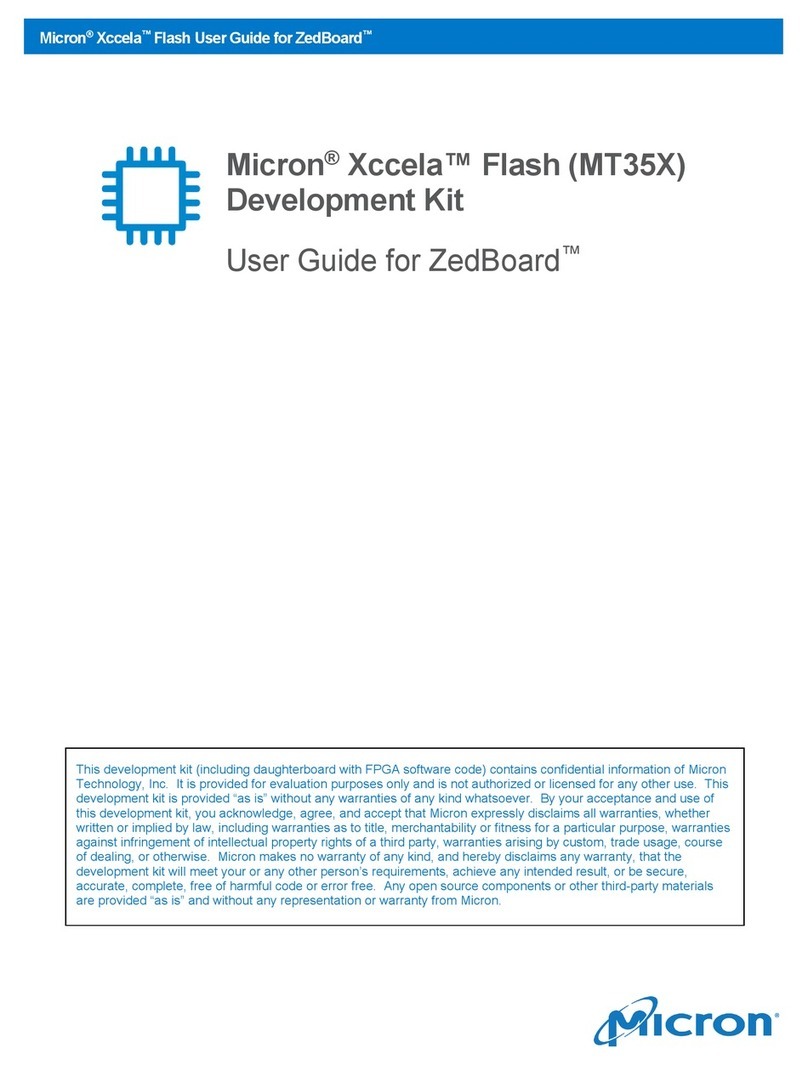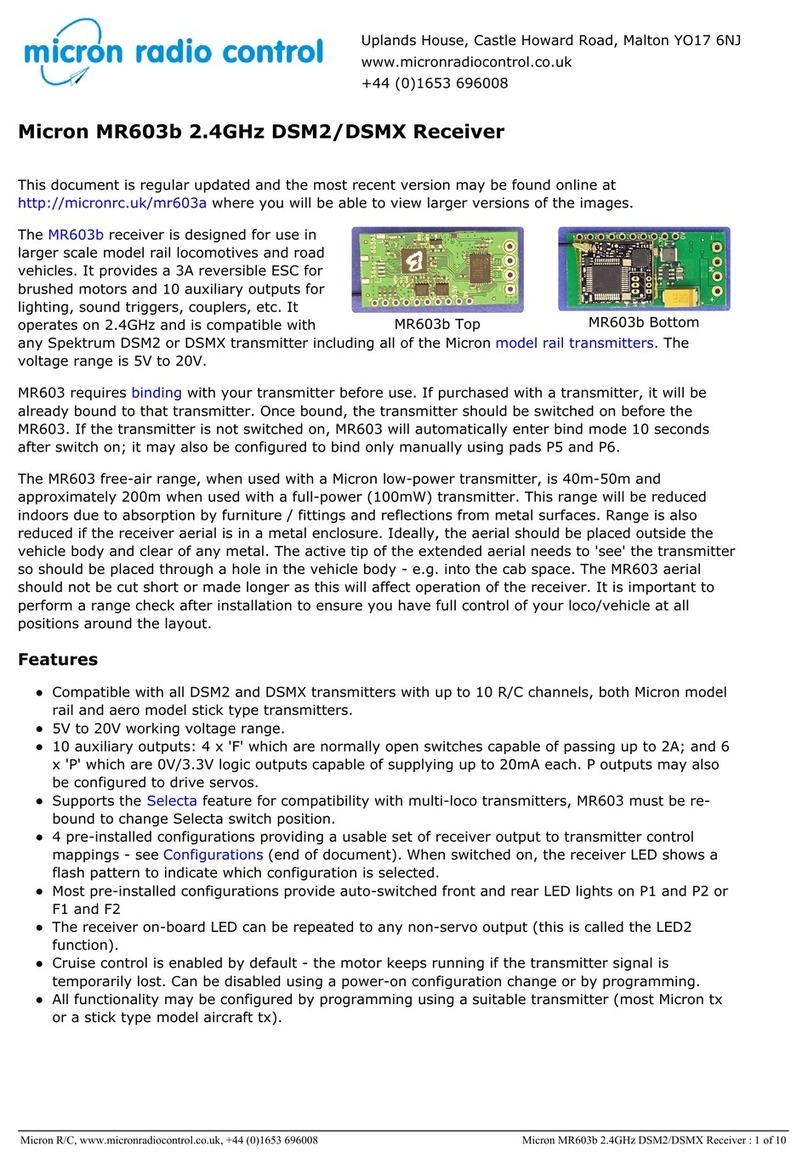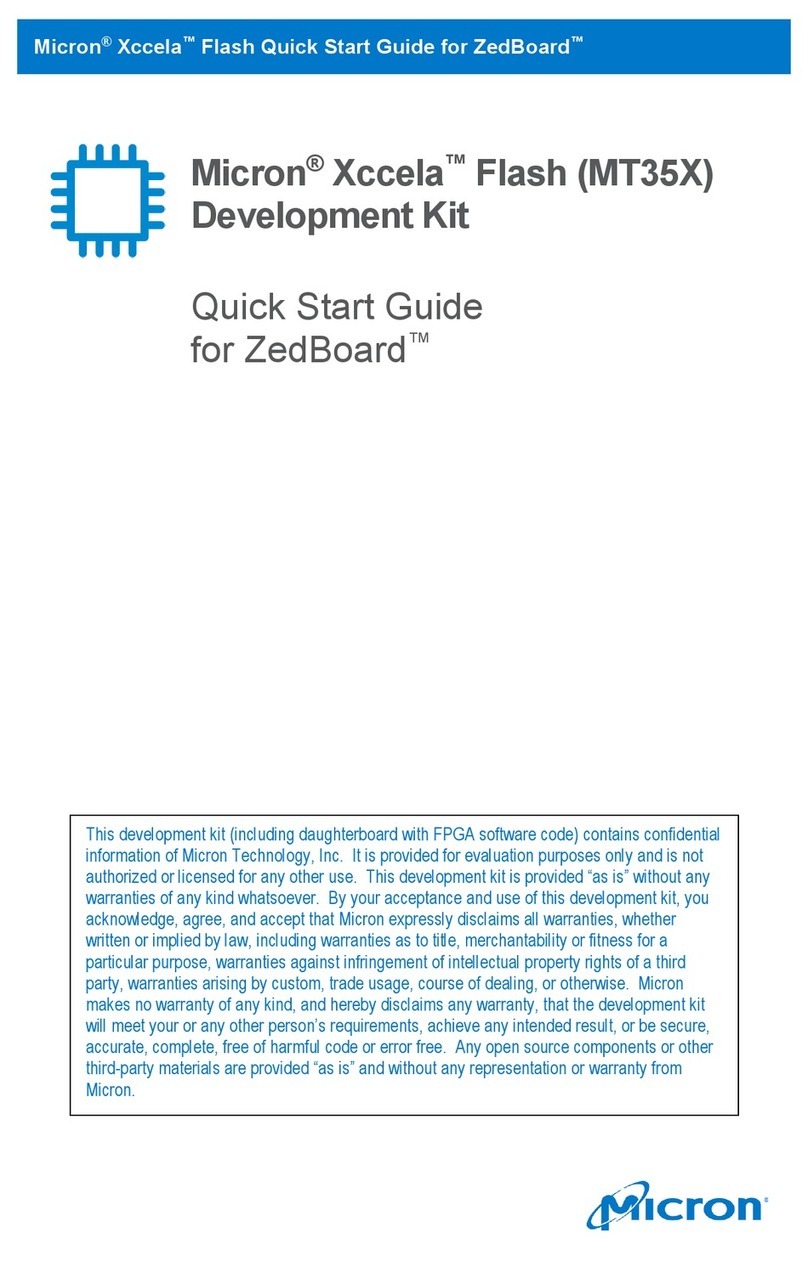The level value is accepted and the flash count for the next level is displayed by setting the R/C channel
3 control high and back to mid.
Most Micron transmitters have a toggle switch on R/C channel 3 which is marked A/B, or forward/reverse for
a low-off transmitter:
pushing the switch down (or toward 'reverse' for a low-off transmitter) sets the R/C channel to a low
value and increments the flash count,
pushing the switch up (or toward 'forward') sets the R/C channel to a high value, accepts flash count
and moves the program sequence on to next level or exit programming mode if the current level is the
last in the sequence
Always return the toggle switch to centre after pushing down or up. Refer to the transmitter user manual for
specific information on the R/C channel 3 control - Tx24v2 has a rotary reverse control.
The receiver LED will flash rapidly while R/C channel 3 is high or low and then return to a slower repeated
flash when the control is back to the middle.
After accepting the flash count for a level, the CPU LED displays a flash count for the current value of the
next level. This could be higher than 1-flash if the function is set in the receiver configuration or has been
previously programmed. For example:
the default Selecta R/C channel is 2, so a 2-flash will be displayed after entering 4, 8, 2
P1 is configured as a front light, so a 4-flash will be displayed after entering 3, 1
When the last level for a sequence has been accepted, the CPU LED will light continously and the receiver is
back in normal operating mode. The maximum number of levels is 5, but not all sequences use all 5; if level
5 in the table is blank, the CPU LED will light continously after level 4 is accepted.
Programming changes are accepted only when the CPU LED lights solid at the end of the sequence. If a
mistake is made mid way through a sequence, switch the receiver off to abort.
Programming Example
These examples assume MR603 is in as-received configuration and a Micron transmitter with toggle switch on
R/C channel 3. Tx24v2 transmitters have a variable control on R/C channel 3 - the Reverser; the equivalent
actions are:
Action Tx with toggle switch Tx24v2 type transmitter
Increment flash count: toggle down Reverser fully CCW (reverse) and back to centre
Accept flash count: toggle up Reverser fully CW (forward) and back to centre
1. Set P4 as servo on R/C channel 7
program sequence: 2, 4, 1, 6
enter programming mode
LED shows 1-flash (level 1, 1=core)
toggle down and release once, LED shows 2-flash (level 1, 2=servo)
toggle up and release, LED shows 1-flash (level 2, 1=P1)
toggle down and release 3 times, LED shows 4-flash (level 2, 4=P4)
toggle up and release, LED shows 1-flash (level 3, 1=servo)
toggle up and release, LED shows 1-flash (level 4, 1=R/C chan 1 - P6 was prevously a GPIO)
toggle down and release 6 times, LED shows 7-flash (level 4, 7=R/C chan 7)
toggle up and release, LED lights continously and servo on P4 responds to R/C channel 7
2. Reverse servo on P4
program sequence: 2, 4, 7, 1
enter programming mode
LED shows 1-flash (level 1, 1=core)
toggle down and release once, LED shows 2-flash (level 1, 2=servo)
toggle up and release, LED shows 1-flash (level 2, 1=P1)
toggle down and release 3 times, LED shows 3-flash (level 2, 4=P4)
toggle up and release, LED shows 1-flash (level 3, 1=normal servo)
toggle down and release 6 times LED shows 7-flash (level 3, 7=adjust servo
toggle up and release, LED shows 1-flash (level 4, 1=reverse servo direction)
toggle up and release, LED lights continously and servo on P4 rotates in the opposite direction
3. Set D/F4 as momentary GPIO, on when R/C channel 4 is low




























